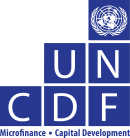Anti-Money Laundering AML Risk Assessment
Documenting the BSA/AML risk assessment in writing is a sound practice to effectively communicate ML/TF and other illicit financial activity risks to appropriate bank personnel. The BSA/AML risk assessment should be provided to all business lines across the bank, the board of directors, management, and appropriate staff. The bank structures its BSA/AML compliance program to address its risk profile, based on the bank’s assessment of risks, as well as to comply with BSA regulatory requirements. Specifically, the bank should develop appropriate policies, procedures, and processes to monitor and control its ML/TF and other illicit financial activity risks. Independent testing (audit) should review the bank’s BSA/AML risk assessment, including how it is used to develop the BSA/AML compliance program. Refer to Appendix I – Risk Assessment Link to the BSA/AML Compliance Program for a chart depicting the expected link of the BSA/AML risk assessment to the BSA/AML compliance program.
- Connecting the insights from transaction-monitoring models with customer risk-rating models can significantly improve the effectiveness of the latter.
- Begin to build capabilities in machine learning, network science, and natural-language processing by hiring new experts or identifying potential internal transfers.
- KRIs refer to known vulnerabilities or aspects of a business that might attract criminals and money launderers.
- While statistically calibrated risk-rating models perform better than manually calibrated ones, machine learning and network science can further improve performance.
Examiners will also look to see if the firm has procedures in place for escalating, analyzing and reporting the potential suspicious activity in a timely manner. It’s important that your firm have an appropriate staffing model for its size and the number of accounts it handles. If your firm lacks staff or they are under trained, your firm may have trouble filing accurate and timely suspicious activity reports. As your firm’s business model changes or you begin to sell new products and add new services, you may need to adjust your AML program. The frequency of updates will depend on the size and complexity of your firm, and whether its business changes.
Social Security Number (SSN) for Customer Identification
They will expect to see that it is « risk-based » and designed to specifically mitigate your firm’s money laundering risk. This allows firms to efficiently use their compliance and supervisory resources, and it provides https://www.xcritical.com/ flexibility to design an AML program customized to fit their business model and customer base. Securities firms of all types and sizes have been money laundering victims, but AML risk varies from firm to firm.
At Okta, we’ve developed a Risk Ecosystem API that helps you to share signals from your security stack and reduce the hazards you face. Find answers to frequently asked questions regarding FINRA Rule 3310 and AML program requirements. Set up a working group to identify technology changes that can be deployed on existing technology (classical machine learning may be easier to deploy than deep learning, for example) and those that will require longer-term planning.
Businesses
Therefore, FINRA’s AML rules require the vast majority of firms to conduct independent testing of their AML program at least once a year. A few kinds of firms—for example, those that do not execute transactions for customers or otherwise hold customer accounts—can test every two years. Residual risks, on the other hand, are what is left after you have taken steps to mitigate the inherent risks. Another way to view residual risks is as the gaps in your controls where there is still a chance that money laundering or other financial crimes could occur. To determine which clients are most likely to be involved with money laundering or other illicit activities, the assessment model looks at key risk indicators – or KRIs.
Implement them properly, and you’ll help ensure that criminals can’t use your bank or financial institutions to make unethical transactions seem legitimate. The assessment of the adequacy of the bank’s BSA/AML compliance program is bank-specific, and examiners should consider all pertinent information. A review of the bank’s written policies, procedures, and processes is a first step in determining the overall adequacy of the BSA/AML compliance program. The completion of examination and testing procedures is necessary to support overall conclusions regarding the BSA/AML compliance program.
The importance of AML risk assessment
Take a first step towards improved Sanctions compliance and start a free 7-Day trial here. Assessing the risk level of each client is an essential part of the onboarding and know your customer process. At this stage, you should complete a sanction screening to confirm that the individual is not on an OFAC or any other Sanctions Lists.
If the drivers increase the risk, then the rating will be higher – and vice versa. As such, the AML assessment will need to include a risk https://www.xcritical.com/blog/aml-risk-assessments-what-are-they-and-why-they-matter/ range so that you can take appropriate action. While estimates vary, experts believe criminals launder about $2 trillion every year.







